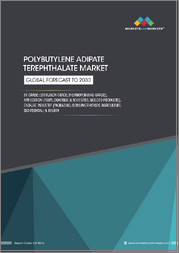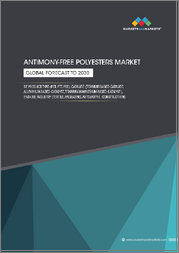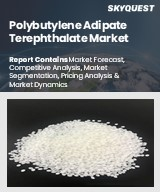
|
시장보고서
상품코드
1761673
세계의 폴리부틸렌 테레프탈레이트(PBT) 수요 분석 : 유형별, 용도별, 시장 예측 분석(2034년)Global Polybutylene Terephthalate (PBT) Demand Analysis, By Types, By Applications and Market Forecast Analysis, 2034 |
||||||
시장 성장 및 소비 동향
전 세계 PBT 소비량은 2024년에 약 1,230 킬로톤에 달했으며, 2032년까지 CAGR 5.5%로 성장할 것으로 예상됩니다. 이러한 성장의 주요 원인은 자동차와 전기 및 전자 응용 분야에서의 사용 증가입니다. 자동차 산업에서 PBT는 구조 부품, 자동차 전자부품, 모터 부품, 점화 시스템 부품의 제조에 사용됩니다. 내열성, 화학적 안정성 및 치수 정밀도가 높기 때문에 보닛 내부의 열악한 환경을 견딜 수 있습니다. 마찬가지로 전기 및 전자 부문에서는 스위치, 회로 차단기, 커넥터, 커넥터, 센서 하우징, 칩 소켓, 터미널 보드 등에 PBT가 사용됩니다. PBT는 낮은 흡습성, 전기 절연성 및 난연성으로 인해 PBT는 신뢰할 수 있고 오래 지속되는 부품에 필수적인 소재입니다.
폴리머 간 대체 및 성능 우위
PBT의 중요한 시장 촉진요인은 폴리머 간의 대체 추세로, PBT는 높은 성능으로 인해 다양한 응용 분야에서 폴리프로필렌과 나일론을 대체하고 있습니다. 강화 PBT 등급은 종종 유리섬유가 함유되어 고온에서 내 산화성이 향상되고 상대적으로 낮은 수분 흡수율로 기계적 강도를 유지합니다. 이 때문에 PBT는 내구성과 신뢰성이 요구되는 용도에 선호되는 소재입니다. 자동차 산업에서는 연비 향상을 위해 경량화 재료로의 전환이 진행되고 있으며, 금속 및 기존 플라스틱을 대체할 수 있는 강인하고 가벼운 재료로서 PBT의 채택이 더욱 가속화되고 있습니다.
다양한 용도와 산업적 활용
PBT의 용도는 자동차, 전자기기 뿐만이 아닙니다. 가전제품과 소비재에서도 내구성과 내열성이 뛰어난 소재로 다양한 부품에 사용되고 있습니다. 또한, PBT는 다른 폴리머와 혼합되거나 합금에 사용되어 특정 용도의 요구에 맞게 유연성 및 강인성과 같은 특성을 향상시킬 수 있습니다. 이러한 다재다능함이 시장의 안정적인 성장을 더욱 뒷받침하고 있습니다.
경쟁 상황
세계 PBT 시장은 경쟁이 치열하며 BASF SE, Bluestar, Almaak International GmbH, Celanese, Lanxess, DSM Engineering Plastics, DowDuPont, Dubay Polymers GmbH, Mitsubishi Engineering Plastics, Chang Chun Group, SABIC, Toray 등의 제조업체가 주도하고 있습니다. 이들 기업들은 난연성, 자외선 저항성, 환경 적합성을 향상시킨 PBT 등급을 개선하기 위해 연구개발에 지속적으로 투자하여 진화하는 업계 표준과 고객의 요구에 대응하고 있습니다.
시장 촉진요인
여러 요인이 세계 PBT 시장의 성장을 지속적으로 촉진하고 있습니다. 전기자동차 시장의 확대로 인해 고온과 전기적 부하를 견딜 수 있는 소재가 요구되고 있으며, 내열성과 전기 절연 능력을 갖춘 PBT가 그 혜택을 받고 있습니다. 또한, 전자기기의 소형화 및 복잡화로 인해 PBT와 같은 고성능 열가소성 플라스틱에 대한 수요가 증가하고 있습니다. 또한, 지속가능성이 중요시되는 가운데 PBT의 재활용 가능성과 내구성은 제품 수명주기를 연장하고 폐기물을 줄이는 데 도움이 되어 시장의 미래를 뒷받침하고 있습니다.
세계의 폴리부틸렌 테레프탈레이트(PBT) 시장에 대해 조사 분석했으며, 시장 역학 및 산업 동향, 각 부문별 수요, 제조업체 프로파일 등의 정보를 전해드립니다.
목차
제1장 소개
제2장 시장 요약
- 시장의 진화
- 수요 개요
- 산업 구조
- 전략상 문제
- 최종 용도 동향
- 성장 예측
제3장 경제와 에너지 전망
- GDP와 인구통계
- 금융 정책과 재정 정책
- 원유 생산과 가격
- 천연가스
- 전기요금
제4장 최종 용도 부문 실적
- 전기·전자
- 자동차
- 가정용품·소비재
- 기타
제5장 폴리부틸렌 테레프탈레이트(PBT) 소개와 시장 개요
- 제품 설명
- 등급과 특성
- 원재료
- 제조 공정
- 환경 문제
- 밸류체인
- 용도
제6장 시장 역학과 산업 동향
- 시장 역학
- 성장 촉진요인
- 성장 억제요인
- 기회
- 과제
제7장 세계의 폴리부틸렌 테레프탈레이트(PBT) 수요 분석 : 용도별(수량과 금액)(2018-2034년)
- 전략상 문제와 COVID-19의 영향
- 수요 분석과 예측(2018-2034년)
- 수요
- 수요 성장률
- 성장 촉진요인 분석
- 세계의 폴리부틸렌 테레프탈레이트(PBT) 시장 : 용도별
- 전기·전자
- 스위치·회로 차단기
- 커넥터, 센서 하우징, 칩 소켓
- 터미널 보드
- 기타
- 자동차
- 구조 부품
- 카일렉트로닉스
- 모터 부품·점화 시스템 부품
- 기타
- 가정용품·소비재
- 합금·혼합
- 기타
제8장 수요 분석과 시장 리뷰 : 지역/국가별(수량과 금액)(2018-2034년)
- 전략상 문제와 COVID-19의 영향
- 수요 분석과 예측(2018-2034년)
- 수요
- 수요 성장률
- 폴리부틸렌 테레프탈레이트(PBT) 시장 : 용도별
- 북미
- 미국
- 캐나다
- 멕시코
- 서유럽
- 독일
- 프랑스
- 이탈리아
- 영국
- 스페인
- 기타 서유럽
- 중유럽 및 동유럽
- 러시아
- 폴란드
- 기타 중유럽 및 동유럽
- 아시아태평양
- 중국
- 일본
- 인도
- 한국
- 기타 아시아태평양
- 중남미
- 중동 및 아프리카
제9장 가격 분석
제10장 주요 전략상 문제와 사업 기회 평가
- 시장 매력 평가
- 전망과 표적 시장 조사
제11장 전략적 추천과 제안
제12장 기업 분석
- 폴리부틸렌 테레프탈레이트(PBT) 제조업체 개요/기업 분석
- 기본 상세
- 본사, 주요 시장
- 소유
- 기업 재무
- 제조 거점
- 세계 매출
- 총 직원수
- 제품 포트폴리오/서비스/솔루션
- 채용된 주요 사업 전략과 Prismane Consulting 개요
- 최근 발전
- 대상 기업
- BASF SE
- Bluestar
- Almaak International GmbH
- Celanese
- Laxness
- DSM Engineering Plastics
- Dubay Polymers Gmbh
- Mitsubishi Engineering Plastics
- Chang Chun Group
- SABIC
- Toray Industries
- 기타 제조업체
제13장 부록
ksm 25.07.10Polybutylene Terephthalate (PBT) is recognized as one of the top five engineering plastics globally due to its remarkable strength, toughness, and versatility as a semi-crystalline polymer. It offers excellent dimensional stability, low water absorption, high stiffness, and strong heat resistance, making it highly suitable for various demanding applications. PBT finds extensive use in the automotive industry, electrical and electronics sectors, and extrusion processes. Smaller quantities are also used in consumer goods and medical devices, highlighting its broad application range.
The polymer is produced by polycondensation of 1,4-butanediol with either dimethyl terephthalate or purified terephthalic acid (PTA). PBT was developed by German scientist P. Schlack and commercialized by Celanese Corporation in 1970. Over the years, demand for PBT has surged, particularly in developing countries and in the automotive sector, driven by its superior performance compared to conventional plastics.
Market Growth and Consumption Trends
The global consumption of PBT reached around 1,230 kilo tons in 2024 and is projected to grow at a compound annual growth rate (CAGR) of 5.5% through 2032. This growth is mainly fueled by increasing use in automotive and electrical and electronics applications. In the automotive industry, PBT is used to manufacture structural parts, automotive electronics, motor components, and ignition system parts. Its high heat resistance, chemical stability, and dimensional accuracy make it ideal for withstanding harsh under-the-hood conditions. Similarly, in the electrical and electronics sector, PBT is used in switches, circuit breakers, connectors, sensor housings, chip sockets, and terminal boards. Its low moisture absorption, electrical insulation properties, and flame retardancy make it indispensable for reliable, long-lasting components.
Inter-Polymer Substitution and Performance Advantages
A significant market driver for PBT is the trend of inter-polymer substitution, where it is increasingly replacing polypropylene and nylon in various applications due to its higher performance. Reinforced PBT grades, often glass fiber-filled, offer improved oxidation resistance under elevated temperatures and maintain mechanical strength with relatively low water absorption. This makes PBT a preferred material for applications requiring durability and reliability. The automotive industry's push towards lightweight materials to improve fuel efficiency further accelerates PBT adoption, as it offers a strong but lightweight alternative to metals and traditional plastics.
Diverse Applications and Industry Use
PBT's applications extend beyond automotive and electronics. It is used in household appliances and consumer goods, where it serves as a durable, heat-resistant material for various parts. Additionally, PBT is blended with other polymers or used in alloys to enhance properties such as flexibility or toughness, tailored to specific application needs. This versatility further supports steady market growth.
Competitive Landscape
The global PBT market is highly competitive, with leading manufacturers such as BASF SE, Bluestar, Almaak International GmbH, Celanese, Lanxess, DSM Engineering Plastics, DowDuPont, Dubay Polymers GmbH, Mitsubishi Engineering Plastics, Chang Chun Group, SABIC, and Toray Industries. These companies continuously invest in research and development to improve PBT grades with enhanced flame retardancy, UV resistance, and environmental compliance, keeping pace with evolving industry standards and customer demands.
Key Market Drivers
Several key factors continue to drive the growth of the global PBT market. The expansion of the electric vehicle market demands materials that can withstand high temperatures and electrical loads, which benefits PBT due to its heat resistance and electrical insulating capabilities. Increasing miniaturization and complexity in electronic devices also fuel the demand for high-performance thermoplastics like PBT. Moreover, as sustainability gains importance, the recyclability and durability of PBT help extend product life cycles and reduce waste, supporting its market potential.
Table of Contents
1. Introduction
- Scope
- Market Coverage
- Application
- Regions
- Countries
- Years Considered
- Historical - 2018 - 2023
- Base - 2024
- Forecast Period - 2025 - 2034
- Research Methodology
- Approach
- Research Methodology
- Prismane Consulting Market Models
- Assumptions & Limitations
- Abbreviations & Definitions
- Conversion Factors
- Data Sources
2. Market Synopsis
- Market Evolution
- Demand Overview
- Industry Structure
- Strategic Issues
- End-use Trends
- Growth Forecast
3. Economic & Energy Outlook
- GDP and Demographics
- Monetary & Fiscal Policies
- Crude Oil Production and prices
- Natural Gas
- Electricity Prices
4. End-use Sector Performance
- Electrical & Electronics
- Automotive
- Households & Consumer Appliances
- Others
5. Introduction to Polybutylene Terephthalate (PBT) and Market Overview
- Product Description
- Grades & Properties
- Raw Material
- Manufacturing Process
- Environmental Issues
- Value Chain
- Applications
6. Market Dynamics and Industry Trends
- Market Dynamics
- Drivers
- Restraints
- Opportunities
- Challenges
7. Global Polybutylene Terephthalate (PBT) Demand Analysis, By Application (Volume, Value) (2018-2034)
- Strategic Issues and COVID-19 Impact
- Demand Analysis and Forecast (2018- 2034)
- Demand
- Demand Growth Rate (%)
- Driving Force Analysis
- Global Polybutylene Terephthalate (PBT) Market, By Application
- Electrical & Electronics
- Switches & circuit breakers
- Connectors, sensor housings, chip sockets
- Terminal boards
- Others
- Automotive
- Structural parts
- Automotive electronics
- Motor components & ignition system components
- Others
- Households & Consumer Appliances
- Alloys & Blends
- Others
8. Demand Analysis and Market Review, By Region, By Country (Volume, Value), (2018- 2034)
- Strategic Issues and COVID-19 Impact
- Demand Analysis and Forecast (2018 - 2034)
- Demand
- Demand Growth Rate (%)
- Polybutylene Terephthalate (PBT) Market, By Application
Note: Demand Analysis has been provided for all major Regions / Countries as mentioned below. The demand (consumption) split by application has been provided for each of the countries / regions in Volume (Kilo tons) and Value (USD Million).
- North America
- USA
- Canada
- Mexico
- Western Europe
- Germany
- France
- Italy
- United Kingdom
- Spain
- Rest of Western Europe
- Central & Eastern Europe
- Russia
- Poland
- Rest of Central & Eastern Europe
- Asia-Pacific
- China
- Japan
- India
- South Korea
- Rest of Asia-Pacific
- Central & South America
- Middle East & Africa
Note: CAGR will be calculated for all the applications to arrive at the regional / global demand growth for the forecast period (2025 - 2034)
9. Pricing Analysis
10. Key Strategic Issues and Business Opportunity Assessment
- Market Attractiveness Assessment
- Prospective & Target Market Study
11. Strategic Recommendation & Suggestions
12. Company Analysis
- Polybutylene Terephthalate (PBT) Manufacturers Profiles/ Company Analysis
- Basic Details
- Headquarter, Key Markets
- Ownership
- Company Financial
- Manufacturing Bases
- Global Turnover
- Total Employee
- Product Portfolio / Services / Solutions
- Key Business Strategies adopted and Prismane Consulting Overview
- Recent Developments
- Companies Covered -
- BASF SE
- Bluestar
- Almaak International GmbH
- Celanese
- Laxness
- DSM Engineering Plastics
- Dubay Polymers Gmbh
- Mitsubishi Engineering Plastics
- Chang Chun Group
- SABIC
- Toray Industries
- Other Manufacturers
Note: This section includes company information, company financials, manufacturing bases and operating regions. Company financials have been mentioned only for those companies where financials were available in SEC Filings, annual reports, or company websites. All the reported financials in this report are in U.S. Dollars. Financials reported in other currencies have been converted using average currency conversion rates. Company profiles may include manufacturers, suppliers, and distributors.
13. Appendices
- Demand - Regions
- Demand - Countries



















